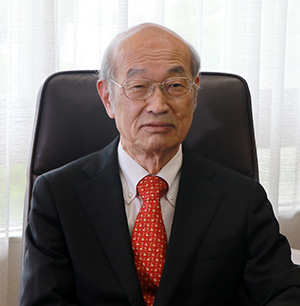What will the economy be like this year? In late December 2021, the government released its "Economic Outlook," as it does every year. This is an economic forecast that serves as the basis for various policies, including budget formulation. According to the forecast, the real growth rate (real GDP = real gross domestic product growth rate compared to the previous year) for fiscal 2022 will be 3.2%, the highest growth rate since fiscal 2010 (3.3%) after the Lehman Shock.
Immediately after the COVID-19 shock, the economy plunged by minus 4.5% in fiscal 2020, but is expected to recover slowly to a projected 2.6% in fiscal 2021, and maintain that pace of recovery in fiscal 2022. According to the Nihon Keizai Shimbun, the average growth rate forecast by major private research institutes for fiscal 2022 is 3.0%, which is not much different from the government's outlook. How should we interpret this? Growth of around 3% may seem like a good sign, but in reality it is not.
I was involved in economic forecasting at the Japan Economic CUC Research Institute some 50 years ago, when short-term economic forecasting was in its infancy, and from that experience I learned that in times of drastic economic fluctuation like today, we must be careful of "growth rate jumps." This may be a bit technical, but it's an important point, so let me explain it in detail.
GDP is compiled and published quarterly by the Cabinet Office's Economic and Social Research Institute. Annual GDP is the sum of quarterly GDP. Here, "geta" refers to the ratio of GDP in the final quarter of the fiscal year, i.e. the fourth quarter, to the quarterly average of GDP for that fiscal year. Since the economy of the following fiscal year starts from the final quarter of the previous fiscal year, even if there is no growth at all during that fiscal year, if there is geta, it will be calculated as having grown by that amount.
If we calculate using the latest forecast from the Japan Center for Economic Research, which has quarterly data, we can see that there will be a 1.8% bend in fiscal 2021. In other words, the government forecast for the real growth rate in fiscal 2021 is 2.6%, and the Nikkei Center forecast is 2.7%, but with a 1.8% bend, the annual growth speed will be just under 1% after deducting the bend. We can also calculate that there will be a bend of about 1.5% in fiscal 2022, so the growth speed for the entire year of fiscal 2022 will be about 1.5% after deducting the bend. Contrary to appearances, the economic recovery is quite weak.
From our experience with the COVID-19 pandemic over the past two years, we have learned that Japanese people behave cautiously even without a lockdown. The number of infected people has been kept much lower than in Europe and the United States, and the number of serious cases and deaths is also orders of magnitude lower. Despite this, the extent of the economic damage seems to be greater than in Europe and the United States. The same is true of Japan's resilience.
The New York Times Digital Edition (dated January 4th) has an article about "The Great Resignation." According to it, in the United States, 4.5 million people (3% of the employed) voluntarily left their jobs in the month of November last year, the highest number in the last 20 years. What is important is that the wages of these voluntarily left workers have risen more than those who did not choose to leave their jobs. Also on January 4th, the Nihon Keizai Shimbun ran an article titled "The Great Resignation Era Prompted by COVID-19," introducing the situation of job changes in the United States and explaining that human resource mobility is the source of economic innovation. Economics teaches us that in times of economic change, the productivity of the entire economy increases when labor moves from declining sectors to growing sectors.
Although Japan has been a good student in containing the COVID-19 pandemic, it has to be said that it is far behind the United States in terms of economic vitality. This is probably why Japan's resilience is weak. The risk-averse national character of the Japanese people may not change easily, but both the public and private sectors need to make efforts to increase the flexibility of the labor market and the entire economic organization. Otherwise, I am worried that the Japanese economy will sink even further in the post-COVID global economy.
(January 7, 2022)

[Profile of Shigeo Uchida]
Graduated from the Faculty of Economics at Keio University in 1965. Joined the Nikkei Inc. After working in the Securities Department of the Editorial Office, the Japan Center for Economic Research, head of the Securities Department at the Tokyo Head Office and as an editorial writer, he became Professor Chiba University of Commerce in 2000. He has been Managing Director Corporation since 2011 (until May 2019). He is also Professor Emeritus Chiba University of Commerce. He has served as a member of the Economic Council, Securities and Exchange Council, and Research Council for Energy, among others. His hobby is chorus.
<Major publications>
"Seminar: Introduction to the Japanese Economy" (co-author, Nihon Keizai Shimbun)
"Showa Economic History (Part 2)" (co-author, Nihon Keizai Shimbun)
"The New Japanese Economy" (co-author, Nihon Keizai Shimbun)
"History of Japanese Securities 3" and "Now You Can Understand! How the Japanese Economy Works" (sole author, Nihon Keizai Shimbun, Inc.)
"New Introduction to the Japanese Economy" (co-author, Nikkei Publishing Inc.) and others